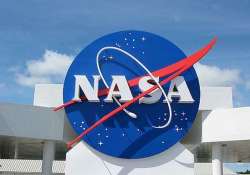NASA successfully tests 'flying saucer' for Mars mission
Washington: After a series of weather-related delays, NASA has successfully tested its revolutionary "flying saucer" that will help land heavier payloads on the surface of long-distance planets, including Mars.NASA's Low-Density Supersonic Decelerator (LDSD) project completed

Washington: After a series of weather-related delays, NASA has successfully tested its revolutionary "flying saucer" that will help land heavier payloads on the surface of long-distance planets, including Mars.
NASA's Low-Density Supersonic Decelerator (LDSD) project completed its second flight test when the saucer-shaped craft splashed down safely in the Pacific Ocean off the coast of the Hawaiian island of Kauai on Monday.
The test vehicle was carried by balloon to about 120,000 feet.
After release, an engine took the vehicle to 180,000 feet, where the tests occurred in the thin atmosphere to simulate Mars' atmosphere, the US space agency said in a statement.
After reaching a height of 180,000 feet, a doughnut-shaped airbag successfully inflated around the saucer for its descent to earth.
A huge parachute, however, only partially opened. The parachute shred on deployment in what NASA engineers described as "partial chute".
This flight test was the second of three planned for the project.
Last year, an LDSD test in Hawaii was deemed a success by engineers, despite the vehicle's huge parachute apparently failing to deploy properly, according to space.com.
The LDSD mission is designed to test entry and descent technology in the form of a donut-shaped airbag and a supersonic parachute that can be deployed while the vehicle is travelling several times the speed of sound.
In order to support a human mission to the Red Planet, NASA needs technologies capable of landing between 20 to 30 metric tonnes on the Martian surface.
The LDSD supports payloads of two to three tonnes, doubling the current capabilities.
The LDSD mission will also allow access to more of the planet's surface by enabling landings at higher-altitude sites.